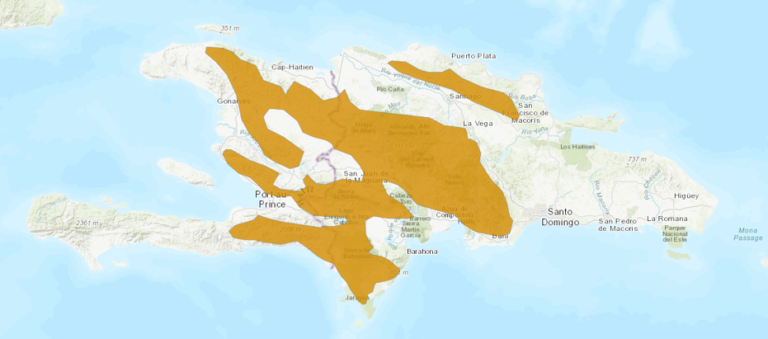Birdfinding.info ⇒ Locally common in a few areas, but thinly distributed and sporadic over much of its range. In the D.R., reliably present in the pine forest zone of Alcoa Road and along the south shore of Lago Enriquillo west of Duverge. Also often found in the Monte Cristi area. There are an increasing number of reports from Santo Domingo and coastal resort areas such as Punta Cana. In Haiti, fairly common in the northern mountains, around Cap-Haitien, in the central plains, and at La Visite National Park.
Hispaniolan Palm Crow
Corvus palmarum
Endemic to Hispaniola, where it occurs mainly in pine forests and desert scrub from the northern coastal plain of Haiti and the D.R., the Massif du Nord, and Cordillera Septentrional south to the Massif de la Selle and Barahona Peninsula.
After decades of apparent decline, there are indications that its populations are rebounding and expanding, with recent reports from the western Tiburon Peninsula and coastal lowlands of the eastern D.R., including the Samaná Peninsula, Punta Cana, La Romana, and Santo Domingo. This may indicate adaptation to human activity and/or a shift in competition with the White-necked Crow (or a pattern of misidentification, as these locations are outside the historical range of Hispaniolan Palm Crow, but within the regular range of White-necked Crow.)
Identification
Slightly smaller than Hispaniola’s other crow, the White-necked. Hispaniolan Palm has a dark eye, thinner head and neck, and more conical bill with more extensive feathering over the nostrils.
The two species are best distinguished by voice, but the visual differences are also apparent at close range.
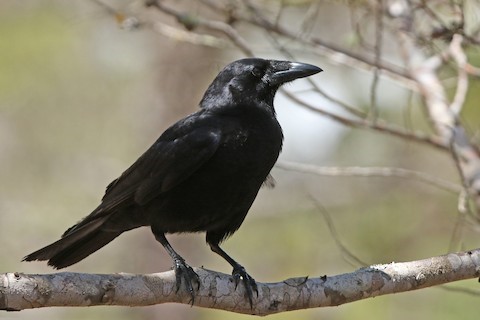
Hispaniolan Palm Crow. (Alcoa Road, Dominican Republic; April 11, 2019.) © Volker Hesse

Hispaniolan Palm Crow. (Alcoa Road, Dominican Republic; March 31, 2017.) © Frédéric Pelsy
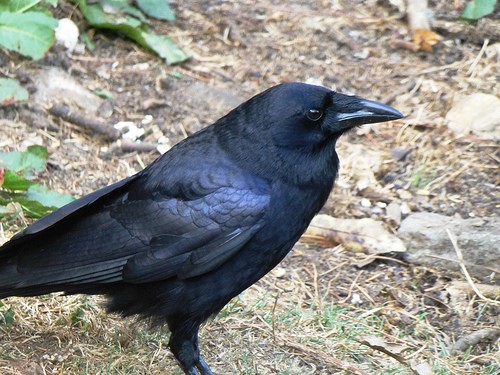
Hispaniolan Palm Crow, showing violet sheen on wings and back. (Pico Duarte Trail, Armando Bermúdez National Park, Dominican Republic; February 17, 2013.) © Peter LaBelle

Hispaniolan Palm Crow. (Pico Duarte Trail, Armando Bermúdez National Park, Dominican Republic; February 17, 2013.) © Peter LaBelle

Hispaniolan Palm Crow, showing violet sheen on wings and back. (Ébano Verde Scientific Reserve, Dominican Republic.) © Dax M. Román E.
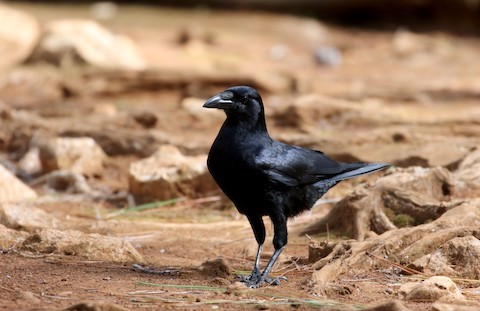
Hispaniolan Palm Crow. (Alcoa Road, Dominican Republic; January 24, 2019.) © Jay McGowan
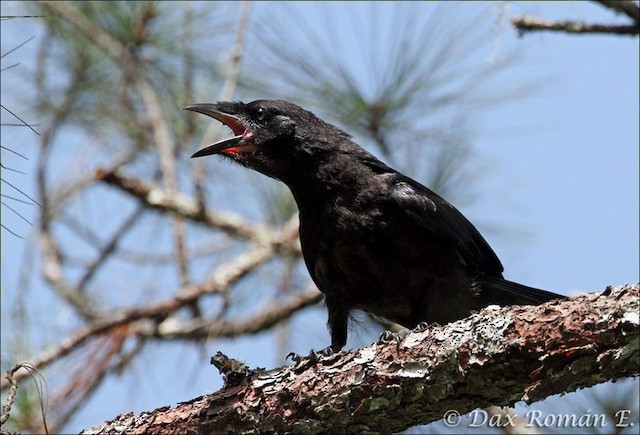
Hispaniolan Palm Crow. (Alcoa Road, Dominican Republic; July 7, 2012.) © Dax M. Román E.
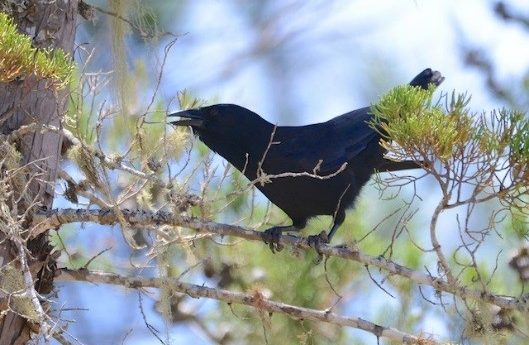
Hispaniolan Palm Crow. (Alcoa Road, Dominican Republic; April 8, 2015.) © Alan Van Norman
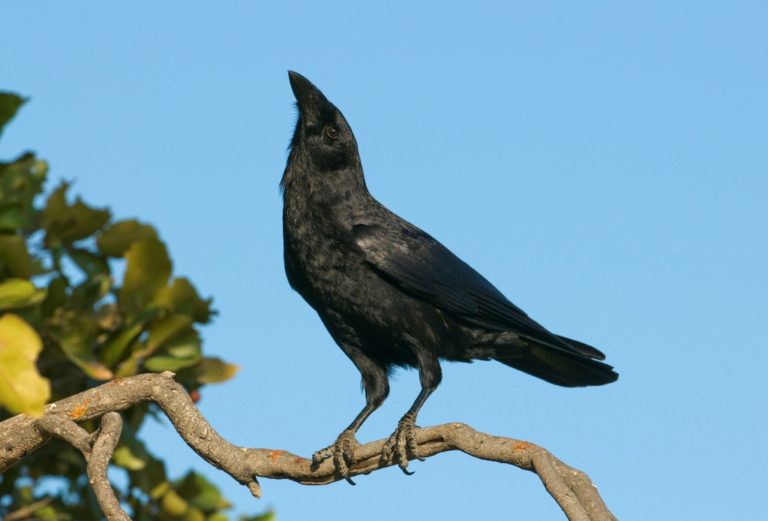
Hispaniolan Palm Crow. (Isla Cabritos, Lago Enriquillo, Dominican Republic; February 9, 2012.) © Kevin Schafer
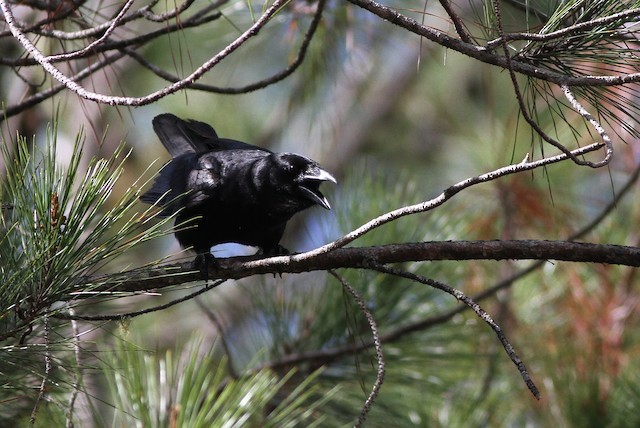
Hispaniolan Palm Crow. (Alcoa Road, Dominican Republic; March 31, 2017.) © Alex Lamoreaux
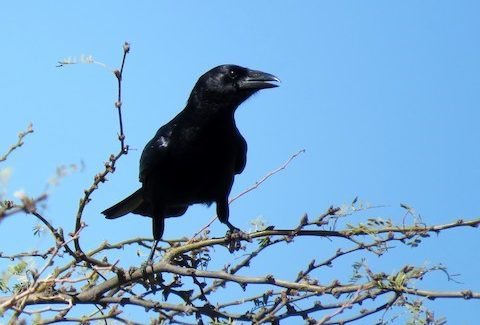
Hispaniolan Palm Crow. (Duverge, Dominican Republic; February 3, 2019.) © Michael Willison

Hispaniolan Palm Crow. (Alcoa Road, Dominican Republic; March 31, 2017.) © Alex Lamoreaux
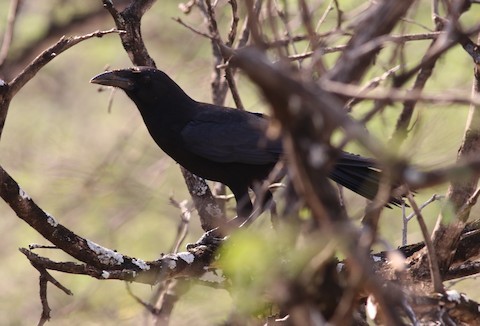
Hispaniolan Palm Crow. (Duverge, Dominican Republic; March 13, 2019.) © Émile Brisson-Curadeau
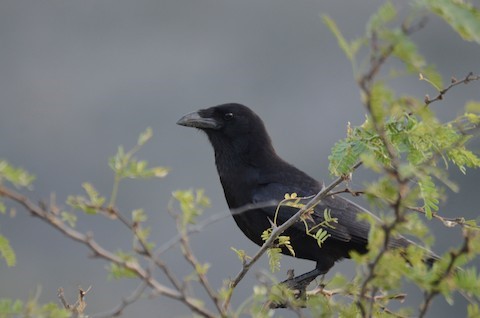
Hispaniolan Palm Crow. (Duverge, Dominican Republic; March 20, 2016.) © Aidan Place
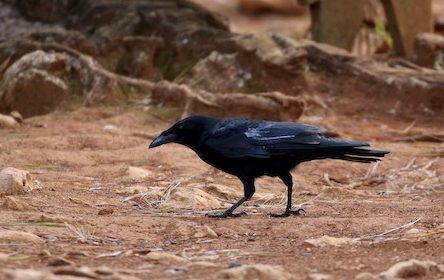
Hispaniolan Palm Crow, showing violet sheen on wings and back. (Alcoa Road, Dominican Republic; January 24, 2019.) © Jay McGowan
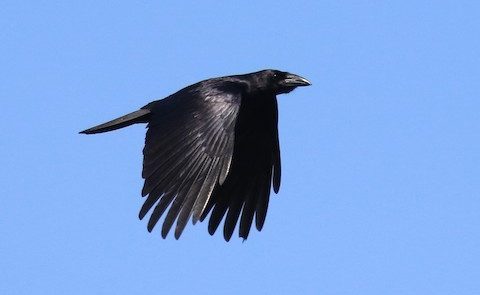
Hispaniolan Palm Crow. (Duverge, Dominican Republic; February 3, 2019.) © Knut Hansen

Hispaniolan Palm Crow. (Duverge, Dominican Republic; March 13, 2019.) © Émile Brisson-Curadeau

Hispaniolan Palm Crow. (Duverge, Dominican Republic; March 19, 2012.) © Jessica Johnson

Hispaniolan Palm Crow. (Duverge, Dominican Republic; April 10, 2019.) © Volker Hesse
Voice. Call is a hoarse caw, usually with a nasal quality, but sometimes deeper and more guttural:
Notes
Monotypic species. Traditionally considered conspecific with Cuban Palm Crow, but differences in voice and other characteristics suggest that the two are distinct.
Two Species of Palm Crows. Opinions differ on the taxonomic status of Hispaniolan and Cuban Palm Crows. Raffaele et al. (1998) regard the two as separate species based on differences in voice, plumage sheen, and leg and bill measurements. The Handbook of the Birds of the World regards the two as conspecific, stating that “even as races they are weakly differentiated; vocal differences minor.”
Based on recordings available online, there is an apparent difference between the voices of the two forms. Hispaniolan’s is rougher, more guttural, whereas Cuban’s is higher-pitched, smoother, and more varied. Raffaele et al. also describe a difference in phrasing: Cuban’s as “a harsh craao, with an initial abrupt rise in pitch, then leveling off and falling slightly at the end”; and Hispaniolan’s as “a harsh nasal aaar, with the vowel sound as in the word ‘fast.’”
Raffaele et al. describe the sheens on Cuban’s plumage as “a faint violet” and on Hispaniolan’s as “purplish and bluish”—but this distinction is difficult to parse and it seems more accurate to describe Hispaniolan’s as purplish, bluish, or violet, and Cuban’s as faint-to-nonexistent The two forms also differ ecologically as reflected in their habitat tolerances, with Hispaniolan occurring mainly in pine forests and desert scrub, and Cuban mainly lowland palm savannas.
References
BirdLife International. 2018. Corvus palmarum. The IUCN Red List of Threatened Species 2018: e.T22731517A131548171. http://dx.doi.org/10.2305/IUCN.UK.2018-2.RLTS.T22731517A131548171.en. (Accessed June 22, 2019.)
eBird. 2019. eBird: An online database of bird distribution and abundance. Cornell Lab of Ornithology, Ithaca, N.Y. http://www.ebird.org. (Accessed June 22, 2019.)
Latta, S., C. Rimmer, A. Keith, J. Wiley, H. Raffaele, K. McFarland, and E. Fernandez. 2006. Birds of the Dominican Republic and Haiti. Princeton University Press, Princeton, N.J.
Marzluff, J., and C.J. Sharpe. 2017. Palm Crow (Corvus palmarum). In Handbook of the Birds of the World Alive (J. del Hoyo, A. Elliott, J. Sargatal, D.A. Christie and E. de Juana, eds.). Lynx Edicions, Barcelona. https://www.hbw.com/node/60790 . (Accessed June 22, 2019.)
Raffaele, H., J. Wiley, O. Garrido, A. Keith, and J. Raffaele. 1998. A Guide to the Birds of the West Indies. Princeton University Press, Princeton, N.J.

